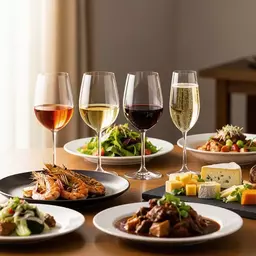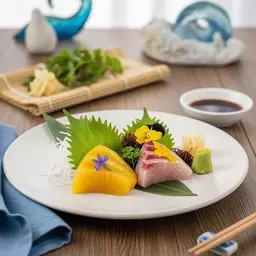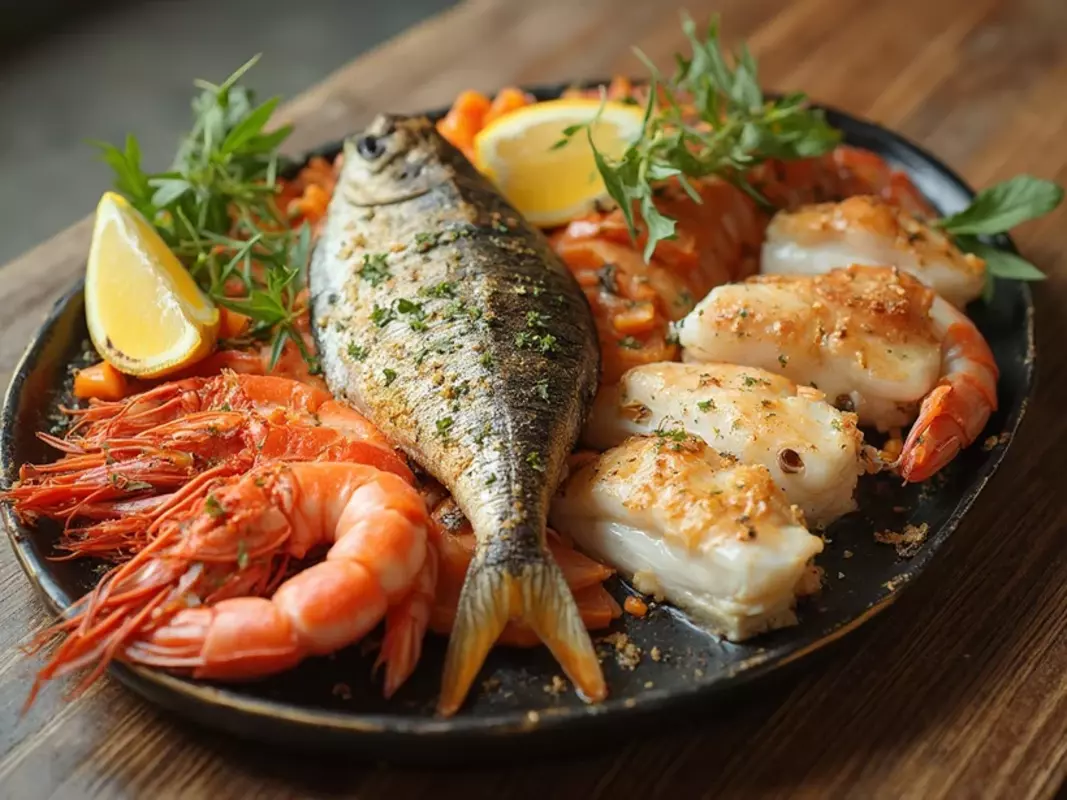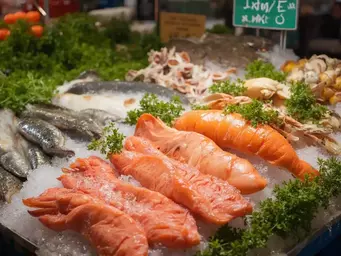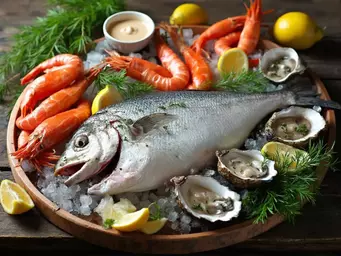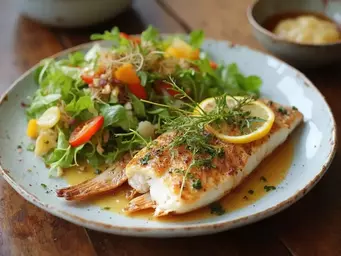Local Ingredients in Australian Cuisine
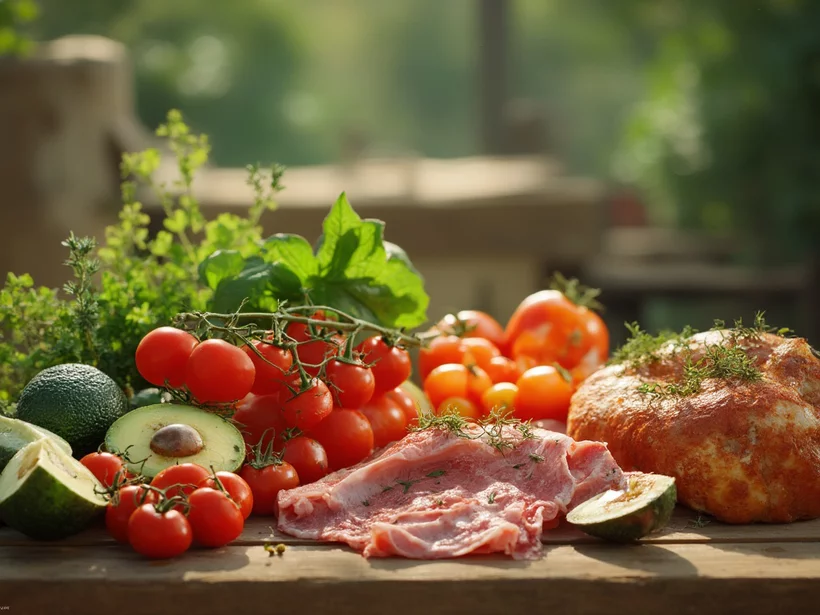
As you embark on your culinary adventure exploring Australian food culture, consider how these diverse influences shape not only your meals but also the stories behind them. What unique flavors will inspire your next dish?
What You Will Learn
- Australian food culture is a melting pot of Indigenous, British, Mediterranean, and Asian influences.
- Using local ingredients not only enhances flavor but also supports sustainable practices and local economies.
- Indigenous ingredients like Kakadu plum and wattleseed carry deep historical significance and culinary potential.
- Culinary tourism helps promote regional specialties and fosters community support for local producers.
- Future trends show a shift towards plant-based innovations and a fusion of global flavors with traditional Australian cuisine.
The Tapestry of Australian Food Culture
Australian food culture is a dynamic blend of Indigenous traditions, colonial legacies, and global influences. This visual highlights the key elements that define this rich culinary identity.
Understanding Australian Food Culture and Its Significance
Australian food culture is a vibrant tapestry woven from a variety of influences, reflecting our unique history and diverse landscape. It’s a melting pot where Indigenous traditions, colonial legacies, and multicultural flavors come together to create something truly special. Have you ever paused to think about how these influences shape the dishes we cherish today?
As a passionate food enthusiast, I find it fascinating to explore how our culinary identity is defined. From hearty meat pies to the freshness of local seafood, each dish tells a story about our past and present. This connection to our food is what makes dining in Australia a rich experience, inviting both locals and tourists alike to savor the moment!
Defining Australian Food Culture: A Melting Pot of Influences
In Australia, food is not just sustenance; it's a celebration of community and culture. The interplay of various culinary traditions means that no single style reigns supreme. Instead, we enjoy a mix of flavors that include:
- Indigenous ingredients that honor the land
- British culinary traditions that shaped early Australian cooking
- Flavors from Mediterranean and Asian cuisines, adding depth and diversity
This melting pot allows us to create dishes that are both familiar and exciting. The beauty lies in how these influences converge, often resulting in delicious fusion dishes that represent the best of what we have to offer.
How Local Ingredients Shape Culinary Identity
At The Yellow Tail Table, we celebrate the essence of local Australian ingredients. These are not just food items; they are the heart and soul of our culinary identity. By utilizing ingredients sourced from our regions, we connect with the land and its story—a story that’s rich with cultural significance. For a deeper understanding of the food landscape, you can refer to the Australian Food Story Report.
- Fresh seafood: Caught daily along our stunning coastlines
- Seasonal produce: Grown in our diverse climates, from tropical to temperate
- Native herbs and spices: Adding unique flavors that speak to our heritage
Using these local ingredients not only enhances the flavor of our dishes but also supports sustainable practices and local economies. As we dive deeper into our culinary roots, we find that each ingredient carries its own story, just waiting to be shared with others!
Pro Tip
To truly appreciate the depth of Australian food culture, consider trying your hand at creating dishes that incorporate Indigenous ingredients. Not only do they offer unique flavors, but they also connect you with the land and its rich history. Start with something simple, like adding Kakadu plum in a chutney or using wattleseed in baked goods, and watch how these native flavors transform your cooking!
Embracing the Richness of Australian Food Culture
As we delve deeper into the essence of Australian cuisine, it's clear that the tapestry of Indigenous ingredients plays a significant role in shaping our culinary identity. At The Yellow Tail Table, I find immense joy in exploring the flavors that stem from our rich heritage. This journey is not just about cooking; it's about celebrating the stories, traditions, and the land that nourish these ingredients.
Indigenous ingredients like Kakadu plum and wattleseed are more than just unique flavors; they are a testament to the resilience and resourcefulness of Australia’s first peoples. By appreciating these native foods, we reconnect with the land, embracing a culinary journey that reflects sustainability and cultural respect. Have you ever tried incorporating these ingredients into your own cooking? To explore the nutritional data of Australian foods, the AUSNUT database is a valuable resource.
Appreciating the Culinary Journey of Indigenous Ingredients
Understanding the culinary journey of Indigenous ingredients invites us to reflect on their historical significance. Here are some key aspects to consider:
- Historical Context: Many native plants and meats have been used for thousands of years, reflecting a deep connection to the land.
- Culinary Techniques: Traditional cooking methods enhance the flavors and nutritional benefits of these ingredients.
- Modern Innovation: Many chefs today are blending these ancient ingredients with contemporary techniques, breathing new life into traditional recipes.
At The Yellow Tail Table, we embrace this culinary narrative in every recipe and article. Each dish tells a story, echoing the voices of those who have cultivated and honored these ingredients long before us. It’s a beautiful reminder of how food can connect us to our shared history.
Invitation to Experience Unique Australian Flavors
I invite you to embark on your own culinary adventure by exploring the unique flavors of Australian cuisine. Whether you are a seasoned cook or just starting, incorporating local and Indigenous ingredients into your meals can elevate your cooking experience. Here are some ways to get started:
- Visit Local Markets: Discover native ingredients like bush tomatoes and finger limes at farmers' markets.
- Experiment with Recipes: Try dishes that highlight Indigenous flavors, such as Kakadu plum chutney or wattleseed pancakes.
- Engage with Local Chefs: Attend cooking classes or workshops focusing on Australian culinary traditions.
By bringing these flavors into your kitchen, you’ll not only create delicious meals but also foster a greater appreciation for the rich culinary heritage we have here in Australia. So, what unique Australian flavor will you try next?
Continuing the Culinary Conversation: What’s Next for Australian Cuisine?
As we look to the future, it’s crucial to engage with local communities and Indigenous perspectives in our culinary discussions. The evolution of Australian cuisine is a dynamic journey, continuously influenced by our diverse population and rich landscapes. At The Yellow Tail Table, I’m excited to explore these changes and how they shape our culinary identity.
Have you ever wondered how culinary tourism impacts our regional specialties? It’s an exciting aspect that adds another layer to our food culture.
Engaging with Local Communities and Indigenous Perspectives
Engaging with local communities and Indigenous perspectives is essential for the growth of Australian food culture. Here’s how we can be part of this conversation:
- Attend Cultural Events: Participating in local festivals and food events can deepen your understanding of regional flavors.
- Support Indigenous Businesses: Choosing to dine at restaurants that focus on Indigenous ingredients ensures that we honor and support their culinary heritage.
- Educate Yourself: Reading about Indigenous food practices and histories expands our knowledge and appreciation.
By fostering these connections, we not only enrich our own culinary experiences but also honor the traditions and stories of the Indigenous communities that continue to influence our food culture.
Exploring Future Trends in Australian Food Culture
As we embrace the future of Australian food culture, we can anticipate exciting trends that are shaping the culinary landscape. Some noteworthy trends include:
- Plant-Based Innovations: An increasing focus on plant-based dishes that highlight local produce. Reports like the Food Frontier 2023 State of the Industry report highlight the growth in this sector.
- Global Flavors: A growing fusion of global influences with traditional Australian ingredients.
- Health and Wellness: An emphasis on sustainable and healthy eating practices using native ingredients.
These trends not only showcase the versatility of Australian cuisine but also reflect our evolving relationship with food. As I continue to share stories and recipes at The Yellow Tail Table, I’m excited to see how these trends take shape and inspire our culinary journeys.
The Impact of Culinary Tourism on Regional Specialties
Culinary tourism plays a vital role in promoting regional specialties and supporting local economies. Here are some impacts of culinary tourism you might find interesting:
- Increased Awareness: Tourists seeking authentic food experiences help raise awareness of regional cuisines.
- Support for Local Producers: Dining experiences that highlight local ingredients boost demand for regional produce.
- Preservation of Culinary Traditions: Culinary tourism encourages the preservation of unique cooking styles and recipes.
At The Yellow Tail Table, I believe that culinary tourism not only enhances our appreciation for Australian cuisine but also fosters a sense of community and connection among food lovers. So, as we savor these experiences, let’s explore the delicious possibilities that await us!
Recap of Key Points
Here is a quick recap of the important points discussed in the article:
- Melting Pot of Influences: Australian food culture is shaped by Indigenous ingredients, British culinary traditions, and flavors from Mediterranean and Asian cuisines.
- Local Ingredients: Utilizing fresh, seasonal produce and native herbs enhances flavor and supports sustainable practices.
- Indigenous Ingredients: Ingredients like Kakadu plum and wattleseed connect us to Australia’s history and culture.
- Culinary Tourism: Engaging with local communities and supporting Indigenous businesses enriches our culinary experiences.
- Future Trends: Expect a rise in plant-based innovations, global flavor fusions, and a focus on health and wellness in Australian cuisine.
Frequently Asked Questions About Australian Food Culture
- What defines Australian food culture?
- Australian food culture is a vibrant blend of Indigenous traditions, British colonial legacies, and multicultural influences from Mediterranean and Asian cuisines, creating a diverse and unique culinary landscape.
- Why are local ingredients important in Australian cuisine?
- Local ingredients such as fresh seafood, seasonal produce, and native herbs and spices are crucial because they not only enhance the flavor of dishes but also support sustainable practices and local economies, connecting us to the land and its cultural significance.
- What are some examples of Indigenous ingredients and their significance?
- Indigenous ingredients like Kakadu plum and wattleseed are important examples. They carry deep historical significance, reflecting the resilience and resourcefulness of Australia’s first peoples and offering unique flavors that connect to ancient traditions and modern innovation.
- How does culinary tourism impact Australian regional specialties?
- Culinary tourism plays a vital role by increasing awareness of regional cuisines, boosting demand for local produce, and encouraging the preservation of unique cooking styles and recipes, ultimately supporting local communities and producers.
- What are the future trends shaping Australian food culture?
- Future trends in Australian food culture include a shift towards plant-based innovations, an increasing fusion of global flavors with traditional Australian ingredients, and a growing emphasis on health and wellness through sustainable eating practices and native ingredients.
